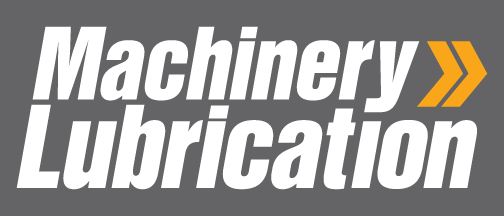
The reasons that lubricants age and need to be replaced periodically are well known. It is true that many of the factors that influence lubricant consumption and oil change intervals are not within the realm of control of most users. However, there are far more controllable factors that many user organizations fail to capitalize on in reducing both costs and risks associated with relubrication.
According to one report, the true cost of an oil change can exceed 40 times the cost of the oil itself. In fact, there are many hidden costs and unknown risks that are encountered during relubrication that must be considered. Let’s look at some of the risks in doing a simple oil change:
- Introducing a wrong, mixed or incompatible oil
- Introducing a contaminated oil
- Introducing a lubricant that degraded in storage (severe additive stratification is a common example)
- Introducing a defective oil (blend or formulation related)
- Disturbing sediment and sludge during the oil change (this is known as the fish bowl effect and can lead to subsequent oil-way blockage and starvation)
- Dislodging sludge and deposits, causing leakage (disturbed oil clotting)
- Dry restarts, dirty oil restarts (before filter can restore cleanliness)
- Human agency failures during or directly after an oil change (over-charging, under-charging, failure to open/close valves, dead-heading pumps, etc.)
When you look collectively at the true cost of an oil change and the associated risks, there is an abundance of financial and business motivation to maximize, or at least optimize, the oil change interval. When well implemented, this can translate to sharply reduced oil consumption, lower maintenance costs and greater machine reliability.
Let’s begin by examining the need for an oil change. Oil doesn’t last forever; it ages in ways similar to the human body. By exposing a lubricant to the elements within a machine (heat, air, water, glycol, particulates, shear, etc.), irreparable damage is often done. Additives can extend a lubricant’s life, but they can’t prevent degradation and aging altogether. Lubricating oils need to be changed for the following reasons:
- There is a current or impending loss of the lubricant’s performance (friction control, wear control, deposit control, corrosion control, etc.).
- The lubricant has become a carrier of one or more harmful and non-removable contaminants (sludge, glycol, bacteria, acids, etc.).
- There is fear that the lubricant might need to be changed (due to one or both of the first two reasons) without a convenient means to confirm.
The following are several common and a few not-so-common methods for reducing lubricant consumption and extending drain intervals. Not all of these methods have practical application in every case where lubricants are used. However, in those cases where extended drain intervals have the greatest potential benefit, a strategy for success relating to the methods can usually be constructed.
Select Lubricants with Enhanced Performance and Durable Service Life
There are a great many differences in the durability of lubricants when exposed to machine operating conditions. Therefore, one simplistic strategy is to select lubricants with robust formulations that resist degradation in the target application. The use of high-purity mineral oils, oxidatively stable synthetics, enhanced antioxidant systems, better demulsifiers, robust over-base additives and long-life dispersants can substantially extend service life of the lubricant. Additionally, select lubricants for the applications for which they were formulated. For instance, a high-performance motor oil might exhibit superior performance in a diesel engine, but it might fail rapidly when used in a hydraulic system.
Reduce the Density of Critical Exposures that Stress Additives and Harm Base Oils
Most additives deplete at a rate proportional to the density of exposure to a range of contaminants and operating conditions. Water, dirt, metal particles, soot, heat, acids and air are all contaminants that put stress on additives and lead to their depletion. Additive depletion is the usual precursor to base oil failure, impaired machine performance and eventual machine failure. The following are examples of how to reduce exposure density:
- Increase the volume of oil used. The greater the oil volume, the more total amount of additive protection there is and the more diluted contaminants become. Contaminant dilution reduces the severity of the stress (activation energy in the case of heat) on both additives and base oil. However, increasing oil volume is not a practical option in many applications.
- Maintain vigilant contamination control. Keeping oils cooler, cleaner, dryer and well-protected can substantially extend service life. This is done by restricting contaminant ingression and rapid removal (filtration, coolers, separators, etc.). It is important to not only reduce the density of these contaminants but also the longevity of exposure.
- Limit exposures to pro-oxidants. Free radicals, hydroperoxides and other oil oxidation by-products accelerate the additive depletion rate (antioxidants) once new oil is added. In many cases, it is important to flush these pro-oxidants from a machine before new oil is added. Oil analysis can alert users to the need to perform a flush during an oil change.
Restore Depleted Additives
Depleted additives can be restored in a couple of different ways for the purpose of extending the oil change interval and to avoid the wasteful disposal of otherwise healthy oil. These are the two options available to users’ organizations:
- Additive reconstruction is the practice of giving certain depleting additives a booster shot. Additive reconstruction involves introducing an additive concentrate to circulating in-service oil. Only certain additives can be reconstructed with suitable success, and the practice is usually only applied to machines with large oil volumes (e.g., turbine oil, compressor lubricants and hydraulic fluids). Further, it should only be done after laboratory testing has confirmed that a lubricant has: 1) not experienced irreparable harm, 2) there are no threatening contaminants that can’t be easily removed (glycol, for instance), and 3) the use of an additive supplement has been determined not to impair performance of other lubricant properties.
- When it is inconvenient or risky to do an oil change, one option is to perform a bleed-and-feed partial oil change. This involves draining a portion (say one-third) of the oil volume, immediately followed by the introduction of new oil. The drained oil removes some of the contaminants, and the new oil dilutes the remaining contaminants and brings in fresh additive.
Optimize the Timing of Lubricant Changes
A vast amount of lubricant is wasted each year due to premature and unnecessary oil changes. In fact, the life expectancy of a lubricant cannot be accurately predicted due to the numerous factors that both induce aging and resist aging. No lubrication expert or computer program can forecast the need for an oil change. Therefore, users are faced with either changing the oil well in advance of any expected end-of-life oil condition (a wasteful and risky practice) or to periodically analyze the oil to monitor the advancing end of life (a far better practice). Analyzing the oil using routine oil analysis is a far more practical and reliable alternative.
Lower Leakage
Of course, leakage doesn’t actually trigger the need for an oil change, but it certainly does result in unnecessary oil consumption through repeated addition of make-up oil. Fortunately, healthy, uncontaminated oil can have an amazing positive impact on reducing oil leakage. Likewise, leakage is often associated with excessive contaminant ingression, which, of course, shortens oil life. All told, there are many opportunities to reduce oil change frequency and the associated costs and risks. All of these involve some form of intervention, transforming past practices to oil-life-extending new practices. Precision lubrication is about selecting the correct intervention action(s) to systematically achieve the intended objective at the lowest possible cost and risk to the organization. In this case, lower oil consumption by extending oil drain intervals.





_small.jpeg)



